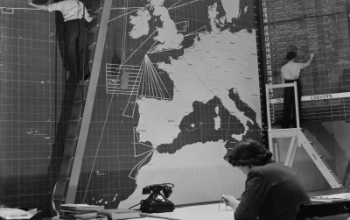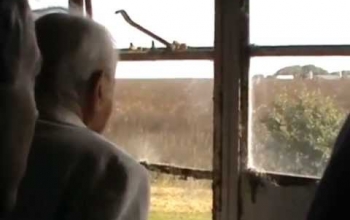Towing the Line
AA (anti-aircraft) defence was a key part of operations at Langham. After practising in the Dome, the next stage in a gunner’s training involved live ammunition and a real flying target at Stiffkey and Weybourne. During and after World War 2, target tug (TT) aircraft took off from RAF Langham to tow cloth targets for these nearby artillery ranges – a dangerous job!
Although Langham’s Dome Teacher was ground-breaking and an extremely effective tool in improving AA gunners’ accuracy, it did not replace the need for physical practice in the field.
Target towing at Langham therefore remained just as important.
In fact, the airfield was originally created as a safe haven for TTs. They played a major part in RAF Langham’s operational life. As other aircraft took on more glamorous duties, the constant task of target towing continued day after day.
In 1941, when there was still just a grass air strip at Langham and the airfield had yet to be modernised or see the introduction of the Dome Teacher, No. 1 Anti-Aircraft Co-operation Unit (AACU) had 15 aircraft and about 200 people working on target towing.
The Hawker Henley
Three red flag targets were carried in the internal bomb bay of the Hawker Henley TT. These were 30ft (9m) long and 5.5ft (1.7m) wide when opened and 7lbs (3.2kg) of lead weights held them steady. A winch and drum below the rear cockpit held 7000ft (2134m) of cable by which they were towed.
The Hawker Henley pilots flew a ‘high tow’ at 5000ft (1524m) for the big, heavy artillery guns at Weybourne, 8 miles away. The ‘low tow’ for the smaller, light artillery at Stiffkey, 2.25 miles away, descended to 600ft (183m) when passing in front of the range.
End of An Era
Between 1952 and 1958, the last flying unit based at Langham towed targets again for AA training, this time it was a commercial company. The staff of No. 2 Civilian Anti-Aircraft Co-operation Unit (No. 2 CAACU) based here were, as the units name suggests, civilians. But nearly all had been in the RAF earlier in their career.
The Unit was run by Marshall of Cambridge, on contract to the government and was the direct descendent of the very first target tug units that gave rise to Langham. At its peak, between 1957 – 58, the Unit had more than 70 staff and used 34 different types of aircraft. Their Beaufighters, Mosquitoes, Spitfires and other aircraft were flown by ex-RAF pilots.
Beaufighter TT10s began towing duty before Mosquito TT35s later arrived to take over. Vampire jets came later still for training and simulated strafe attacks on the army. Meanwhile, Oxfords carried out regular night exercises for searchlight AA crews.
You also needed the right personnel for the job. Veronica Volkerz was the Unit’s only female pilot. At this time, female pilots were unusual. However, Veronica had flown many planes during World War 2. She wrote a book about her flying experiences called ‘The Sky and I’.

